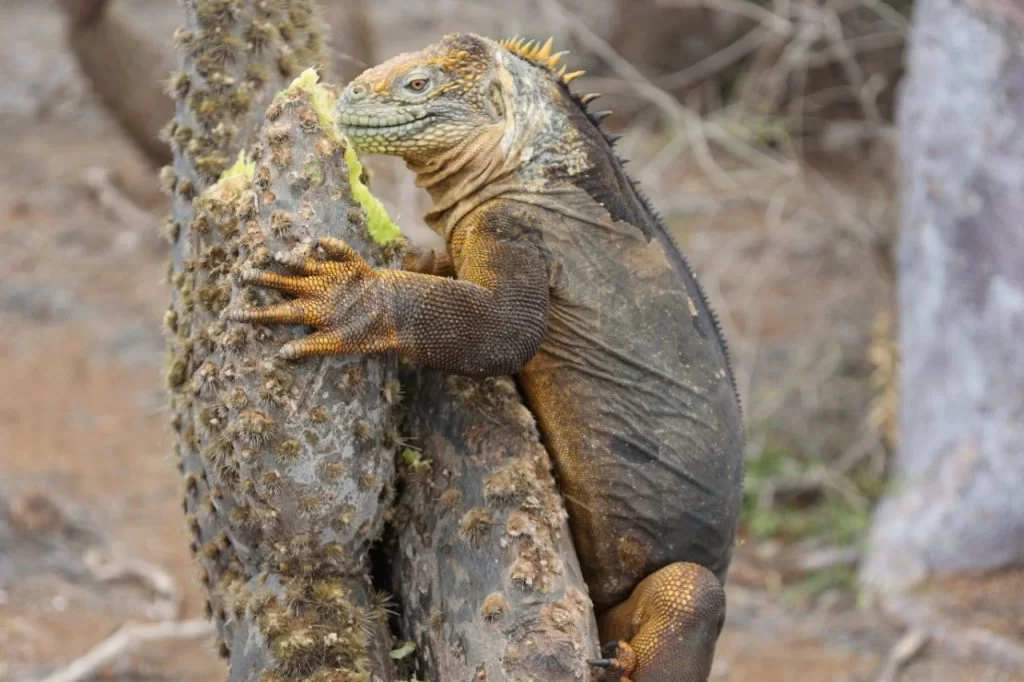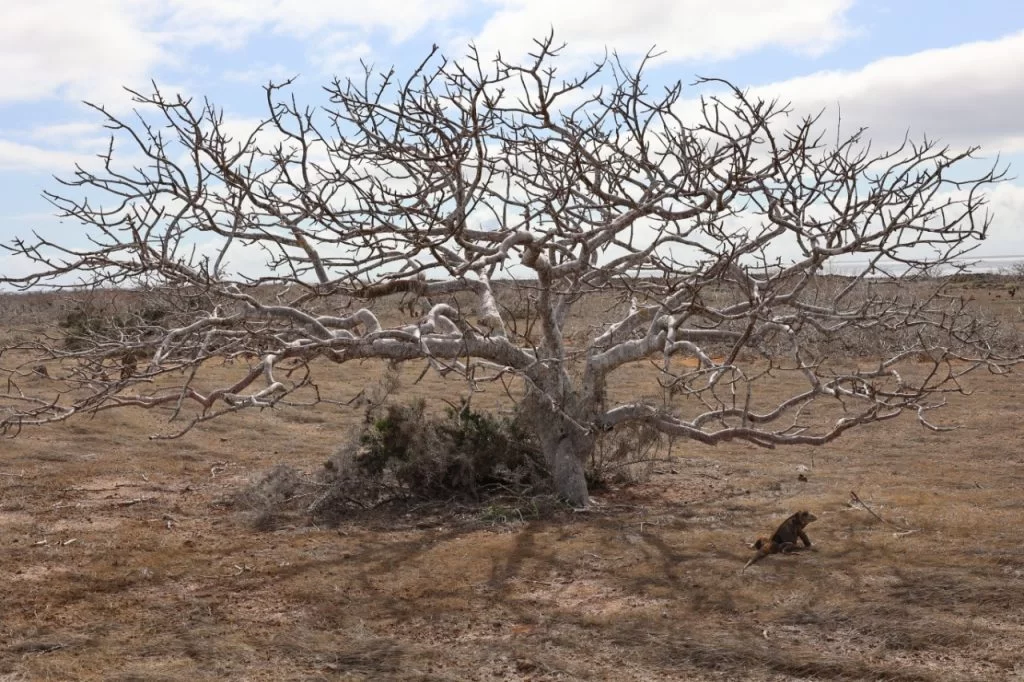Washington Tapia (General Director of Galapagos Conservancy) stated that similar work had been done ten years back, but that it was a limited census that focused on Land Iguanas. “Now several plant species have now been incorporated that are essential for their role in this ecosystem of these islands. Knowing their status will enable us to make more specific recommendations for their management,” said he.

Land Iguana © Xavier Castro/Galápagos Conservancy
Dr. James Gibbs is Vice President of Science and Conservation of Galapagos Conservancy. He highlighted the recovery in the Land Iguanas population () on Baltra Island with an estimated population of approximately 2,467 individuals. On North Seymour, a population of at most 3,930 iguanas has been estimated.
Gibbs stated that the success of Baltra Island’s iguana recovery — which was extinct until a few years ago — was due to the conservation efforts by the GNPD and other entities like the Charles Darwin Foundation.
Iniciativa Galapagos is a joint initiative of the Galapagos Conservancy, the Galapagos National Park Directorate, and aims to monitor ecosystem engineering species and restore the integrity of the Galapagos archipelago’s ecosystems.



